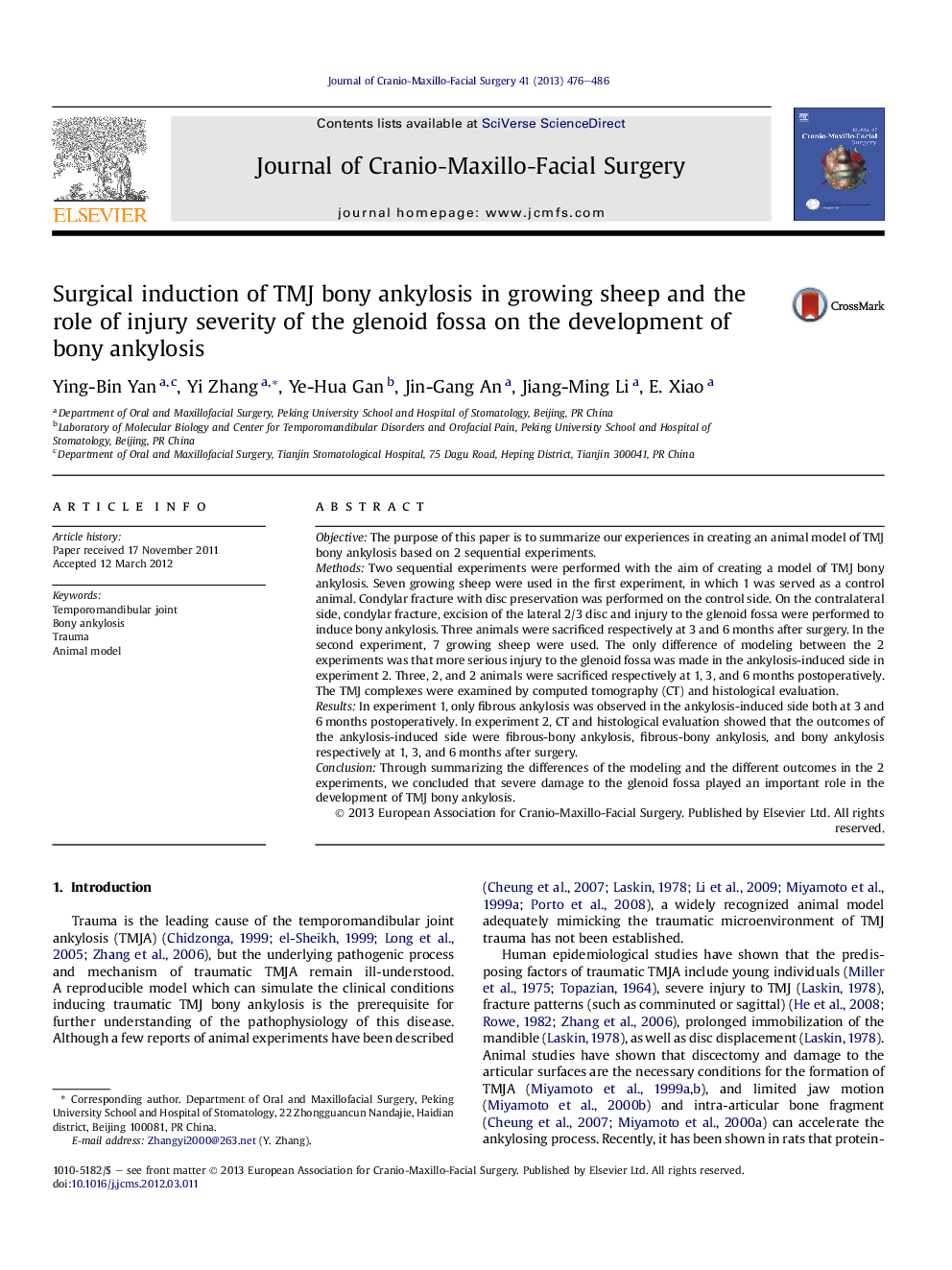| Article ID | Journal | Published Year | Pages | File Type |
|---|---|---|---|---|
| 3143158 | Journal of Cranio-Maxillofacial Surgery | 2013 | 11 Pages |
ObjectiveThe purpose of this paper is to summarize our experiences in creating an animal model of TMJ bony ankylosis based on 2 sequential experiments.MethodsTwo sequential experiments were performed with the aim of creating a model of TMJ bony ankylosis. Seven growing sheep were used in the first experiment, in which 1 was served as a control animal. Condylar fracture with disc preservation was performed on the control side. On the contralateral side, condylar fracture, excision of the lateral 2/3 disc and injury to the glenoid fossa were performed to induce bony ankylosis. Three animals were sacrificed respectively at 3 and 6 months after surgery. In the second experiment, 7 growing sheep were used. The only difference of modeling between the 2 experiments was that more serious injury to the glenoid fossa was made in the ankylosis-induced side in experiment 2. Three, 2, and 2 animals were sacrificed respectively at 1, 3, and 6 months postoperatively. The TMJ complexes were examined by computed tomography (CT) and histological evaluation.ResultsIn experiment 1, only fibrous ankylosis was observed in the ankylosis-induced side both at 3 and 6 months postoperatively. In experiment 2, CT and histological evaluation showed that the outcomes of the ankylosis-induced side were fibrous-bony ankylosis, fibrous-bony ankylosis, and bony ankylosis respectively at 1, 3, and 6 months after surgery.ConclusionThrough summarizing the differences of the modeling and the different outcomes in the 2 experiments, we concluded that severe damage to the glenoid fossa played an important role in the development of TMJ bony ankylosis.
